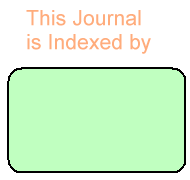Hajer S Alorfi1  ,
Mohamed A Ghandourah2,
Adnan J Turki2
,
Mohamed A Ghandourah2,
Adnan J Turki2
1Department of Chemistry, Faculty of Science, King Abdulaziz University, PO Box 80203;
2Department of Marine Chemistry, Faculty of Marine Sciences, King Abdulaziz University, PO Box 80207, Jeddah 21589, Saudi Arabia.
For correspondence:- Hajer Alorfi
Email: halorfi@kau.edu.sa
Accepted: 26 February 2020
Published: 31 March 2020
Citation:
Alorfi HS, Ghandourah MA, Turki AJ.
Cytotoxic effect of acetogenins and sesquiterpenes obtained from the Red alga Laurencia majuscula. Trop J Pharm Res 2020; 19(3):583-586
doi:
10.4314/tjpr.v19i3.18
© 2020 The authors.
This is an Open Access article that uses a funding model which does not charge readers or their institutions for access and distributed under the terms of the Creative Commons Attribution License (http://creativecommons.org/licenses/by/4.0) and the Budapest Open Access Initiative (http://www.budapestopenaccessinitiative.org/read), which permit unrestricted use, distribution, and reproduction in any medium, provided the original work is properly credited..
Abstract
Purpose: To evaluate the cytotoxicity of n-hexane extract and its metabolites obtained from the red alga, Laurencia majuscula, against three cancer cell lines HCT-116 (colon cancer), PC-3 (prostate cancer) and HepG2 (liver cancer) cells; and to identify the phytochemical compound(s) involved.
Methods: Solvent extraction, thin layer chromatography, aluminum oxide column chromatography, and preparative thin layer chromatography (PTLC) were employed for isolating pure compounds from n-hexane extract of Laurencia majuscula. Nuclear magnetic resonance (NMR) and mass spectrometry (MS) measurements were used for structural elucidation of the compounds. The cytotoxicity of the non-polar extract and isolated compounds were evaluated against HCT, PC-3, and HepG2 cells using MTT assay, relative to the standard cytotoxic drug (cisplatin).
Results: Three sesquiterpenes (1, 2 and 8), and five acetogenins (3-7) were isolated from the n-hexane extract. The n-hexane extract showed higher potent cytotoxic effect than sesquiterpenes and the acetogenins (3-7).
Conclusion: These results indicate that the n-hexane extract of Laurencia majuscula exerts significant cytotoxicity against HCT-116, PC-3 and HepG2 cell lines, thus suggesting that the plant extract may be effective chemotherapeutic agents for the management of colon, postrate and liver cancer.
Keywords: Red Sea alga, Rhodomelaceae, Polyketides, Terpenes, Anticancer
![]() ,
Mohamed A Ghandourah2,
Adnan J Turki2
,
Mohamed A Ghandourah2,
Adnan J Turki2

